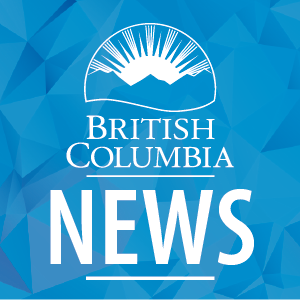Sḵwx̱wú7mesh Úxwumixw (Squamish Nation) and the Province have signed an agreement to guide forest stewardship in Squamish Nation territory at a ceremony held at the top of the Sea-to-Sky gondola overlooking Átl’ḵa7tsem (Howe Sound).
“This agreement is a major step forward in asserting our Nation’s role as stewards of our lands,” said Sxwíxwtn Wilson Williams, Councillor and elected spokesperson, Sḵwx̱wú7mesh Úxwumixw (Squamish Nation). “This will ensure our cultural sites and key environmental areas are protected for future generations. These have been our lands for thousands of years, and the fact they are now back under our direct control provides a greater sense of security for our people, and a strong optimism for our future.”
The Land Use Planning Agreement establishes 33 Siiyamin ta Sḵwx̱wú7mesh cultural sites that will recognize areas of historical and cultural importance to prevent harvesting, new roads and tenures. On top of this, there are six Special Cultural Management Areas (SCMAs), which will be guided by enhanced forest stewardship and cultural management, bringing economic opportunities and increased predictability on the land base for the forestry sector, while protecting important cultural values.
“Forestry is about people and the lands they call home, and by prioritizing these in our vision for forestry, we can build a future rooted in respect and reconciliation,” said Ravi Parmar, Minister of Forests. “This agreement reflects years of meaningful work between the Province and Squamish Nation. By honouring Squamish Nation’s connection to the land and applying their values to forest management, we are charting a path forward that supports economic opportunity and environmental stewardship for our province.”
The agreement will increase protection for riparian and wetland ecosystems, areas of old cedar forests and culturally modified trees. A riparian area is land adjacent to rivers, streams and lakes that support plant and animal life important to ecological balance. By incorporating enhanced riparian management practices, the agreement aims to address the growing impacts of climate change, while protecting fish streams, culturally important plants and food supply.
“Successful land-use planning includes building positive, lasting relationships and trust between First Nations and the B.C. government, communities, stakeholders and the public,” said Randene Niell, Minister of Water, Land and Resource Stewardship. “This agreement, which provides increased protections for riparian and wetland ecosystems, demonstrates what can be done when people work together in good faith to achieve mutually beneficial goals.”
The next step will be to complete a ministerial order, which will include consultation with First Nations, and engagement with the public. It aims to establish objectives for the forestry sector to follow in alignment with the agreement and provide the Squamish Nation certainty in sites of high value.
B.C. is continuing commitments to work alongside rights and title holders to conserve the province’s oldest and rarest trees, while supporting sustainable forestry that adds more local jobs for every tree harvested. The agreement outlines 5,081 hectares of old growth that will not be harvested, 925 hectares within the Siiyamin ta Sḵwx̱wú7mesh cultural sites and 4,155 hectares within the SCMAs, while enabling harvest opportunity to approximately 9,800 hectares of the Timber Harvesting Land Base that was temporarily deferred during negotiations.
Approaching forestry and land-use management in this way secures a more sustainable future for First Nations that benefit from local forests for their economic strength, while ensuring a sustainable land base for harvesting.
Quick Facts:
- This agreement builds on a previous Land Use Planning Agreement signed in 2007 between the Government of B.C. and the Squamish Nation.
- In 2019, B.C. committed to Squamish Nation to negotiate an agreement regarding areas of interest throughout Squamish Nation territory.
- Negotiations began in 2020 and, with this agreement, have completed.
- The Timber Harvesting Land Base is used to determine the Annual Allowable Cut.
Learn More:
To view a copy of the agreement (a signed version will be added Friday, June 27, 2025), visit: https://news.gov.bc.ca/files/Squamish_Nation_AOI_Agreement.pdf
To learn more about Squamish Nation, visit: https://www.squamish.net/
To read about Forest Landscape Planning, visit: https://www2.gov.bc.ca/gov/content/industry/forestry/managing-our-forest-resources/forest-landscape-plans


